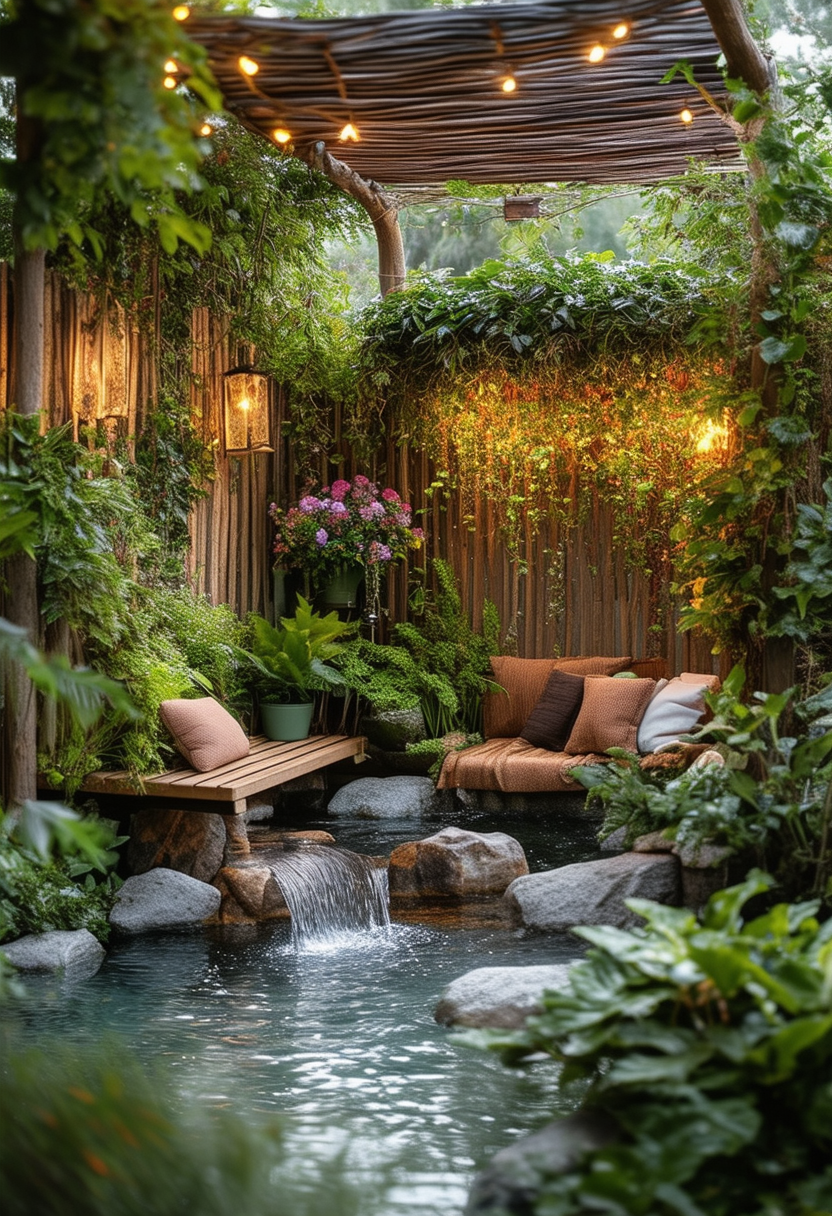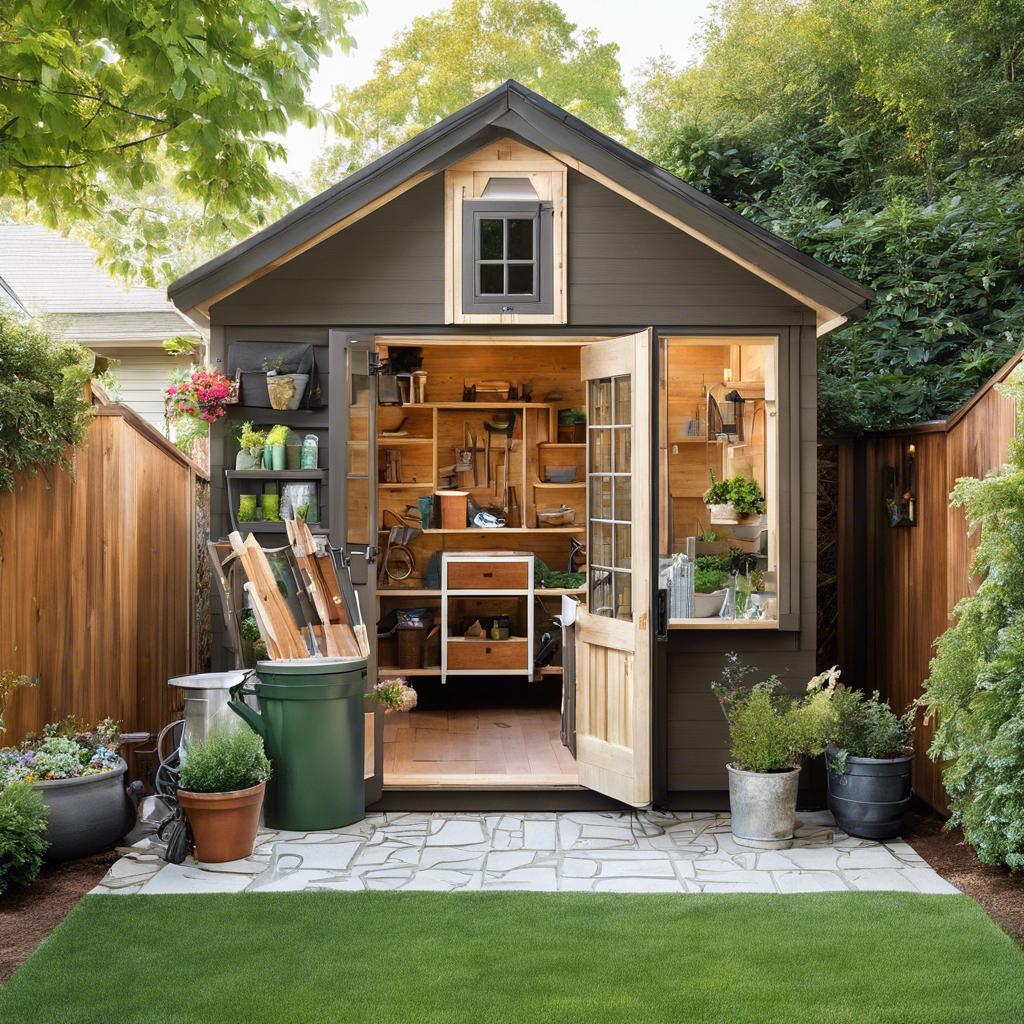Welcome to a world where small spaces are transformed into enchanting oases of creativity and charm. In this article, we will delve into the realm of tiny treasures – exploring innovative ideas for landscaping small gardens with ingenuity and style. From petite patios to cozy balconies, get ready to be inspired by inventive ways to make the most of limited space, turning even the tiniest of outdoor areas into a masterpiece of design. Join us on a journey of discovery as we uncover the secrets of creating stunning small garden landscapes that pack a big punch.
Table of Contents
- Maximizing Space: Innovative Concepts for Small Garden Landscapes
- Incorporating Vertical Elements: A Vertical Garden Approach to Small Garden Landscapes
- Miniature Marvels: Creating a Fairy Garden in your Small Garden Landscape
- Creating Balance: Symmetry and Asymmetry in Small Garden Landscaping
- The Power of Color: Using Plant Color Schemes in Small Garden Landscapes
- Water Features in Small Spaces: Adding a Tranquil Oasis to your Small Garden Landscape
- Repurposing Materials: Sustainable Practices in Small Garden Landscaping
- Embracing Native Plants: Harnessing the Beauty of Local Flora in Small Garden Landscapes
- Focal Points and Pathways: Design Principles for Small Garden Landscapes
- Illuminating the Night: Lighting Ideas to Enhance your Small Garden Landscape
- Q&A
Maximizing Space: Innovative Concepts for Small Garden Landscapes
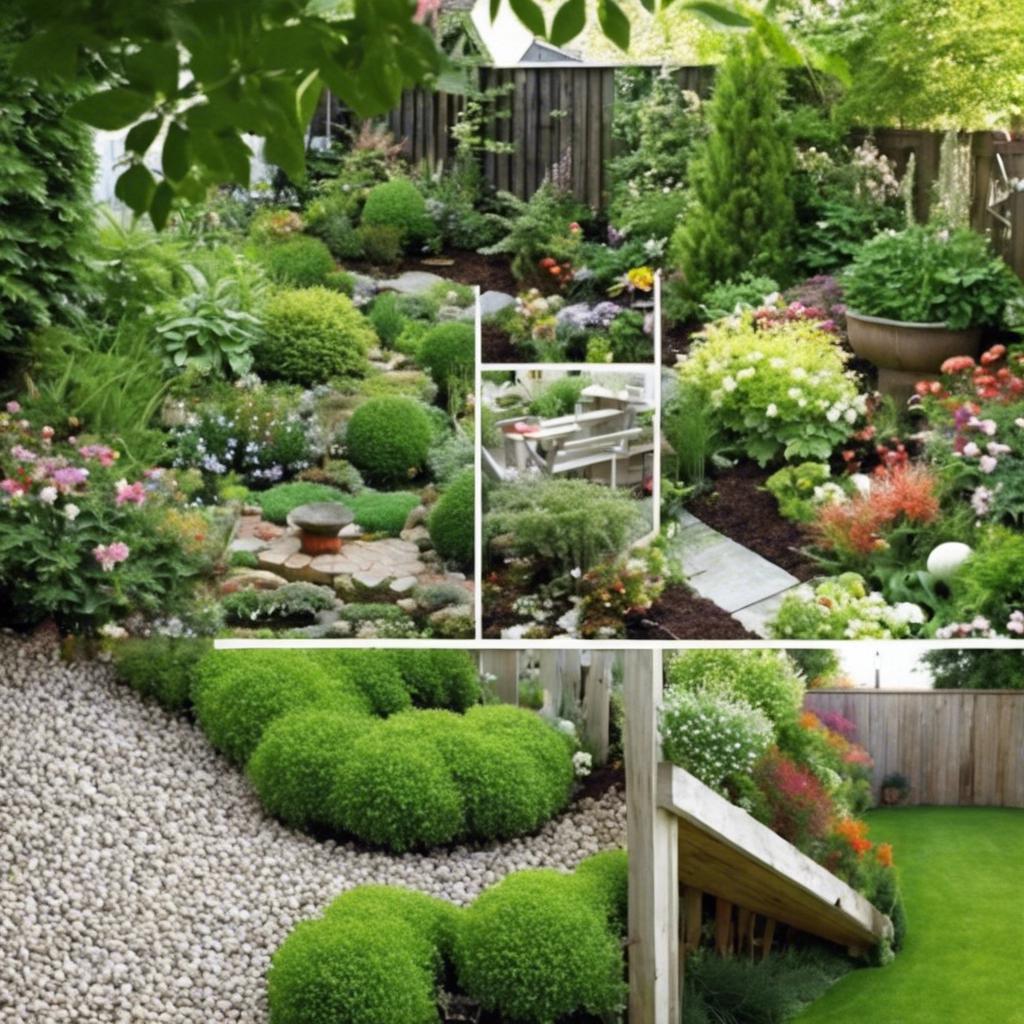
When it comes to small garden landscapes, thinking outside the box can lead to incredible results. Maximizing every square inch of space is crucial, and with a little creativity, even the tiniest of gardens can be transformed into a lush oasis. One innovative concept for small garden landscaping is vertical gardening. By utilizing walls, fences, and trellises, you can create a stunning green wall that not only adds beauty but also maximizes space.
Another creative idea for small garden landscapes is to incorporate multi-functional furniture. Bench seating with built-in storage can serve as both a place to relax and a space-saving solution for stashing gardening tools or extra pillows. Additionally, folding tables and chairs can be easily tucked away when not in use, freeing up valuable space for plants and other garden elements.
Lastly, consider incorporating ornamental grasses and small-scale plants into your small garden landscape. These low-maintenance plants not only add texture and interest to your garden but also take up minimal space. By strategically placing these plants throughout your garden, you can create a sense of depth and dimension, making your small space feel larger than it is. With a little creativity and the right plants, small garden landscapes can be transformed into beautiful, functional outdoor spaces.
Incorporating Vertical Elements: A Vertical Garden Approach to Small Garden Landscapes
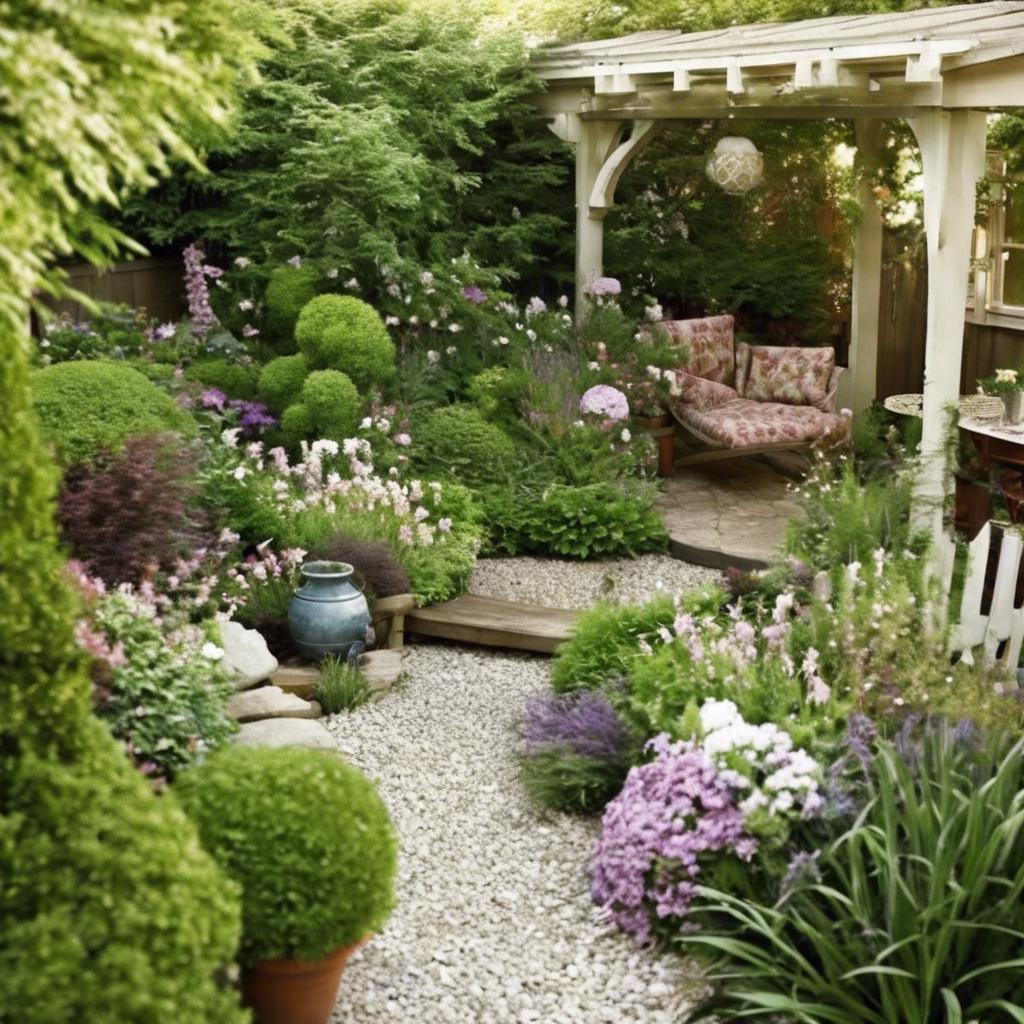
Looking for creative ways to maximize your small garden space? Why not try incorporating vertical elements with a vertical garden approach? Vertical gardens are a great way to add greenery and visual interest to your small garden landscape without taking up precious square footage. By utilizing vertical space, you can create a lush and vibrant oasis in even the smallest of outdoor areas.
One of the easiest ways to incorporate vertical elements into your small garden is by using trellises and arbors. These structures not only add height to your garden but also provide support for climbing plants such as vines, flowers, and vegetables. You can create a stunning vertical display by planting a variety of vines and climbers that will cascade down the trellises, adding depth and texture to your garden.
Another creative way to add vertical elements to your small garden is by using hanging planters and wall-mounted containers. These space-saving options allow you to grow a wide range of plants, from herbs and succulents to flowers and ferns, without taking up any ground space. Consider creating a living wall with a variety of plants in different shapes, sizes, and colors to create a unique focal point in your garden.
Miniature Marvels: Creating a Fairy Garden in your Small Garden Landscape

Miniature marvels are a delightful way to bring a touch of magic to your small garden landscape. Creating a fairy garden is a fun and creative project that allows you to design a whimsical miniature world right in your backyard. With a bit of imagination and some clever landscaping, you can transform even the tiniest outdoor space into a magical oasis.
One creative idea for a small garden landscape is to incorporate tiny treasures such as miniature fairy houses, whimsical accessories, and colorful flowers. These elements can be strategically placed throughout the garden to create a storybook-like setting that will enchant visitors of all ages. Consider adding a miniature pond or tiny pathway to enhance the fairy tale theme of your garden.
Don’t be afraid to think outside the box when designing your miniature marvels. Consider using unconventional materials such as recycled items, driftwood, or even broken pottery to add a unique touch to your fairy garden. Remember, the key is to let your imagination run wild and create a magical world that reflects your own creativity and personality.
Creating Balance: Symmetry and Asymmetry in Small Garden Landscaping
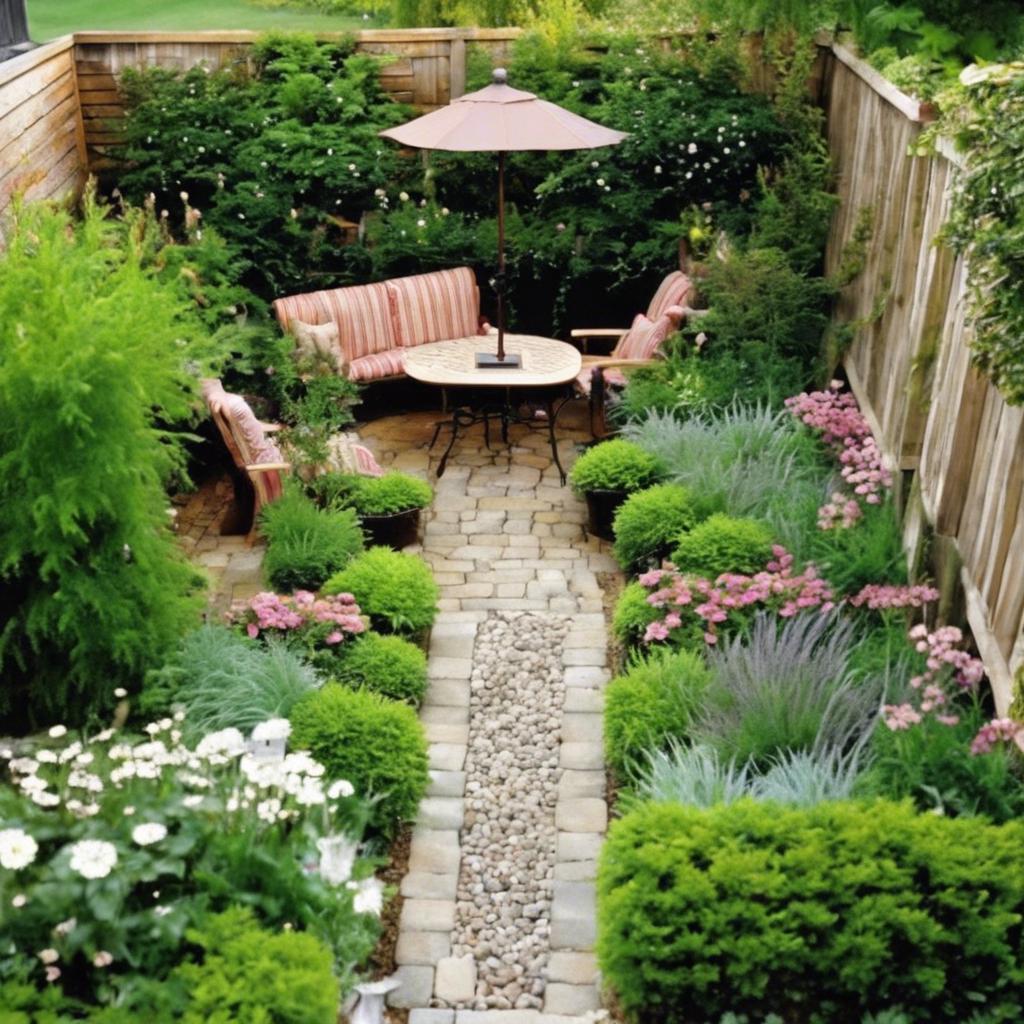
In small garden landscaping, achieving a balance between symmetry and asymmetry can create an aesthetically pleasing and visually interesting space. By carefully combining elements of both symmetry and asymmetry, you can design a tiny treasure of a garden that captivates and delights.
Symmetry in small garden landscaping can be achieved by planting matching pairs of plants on either side of a central focal point, such as a fountain or sculpture. This creates a sense of order and balance, drawing the eye in and creating a harmonious feel. On the other hand, introducing asymmetrical elements, such as winding paths or clusters of varied plantings, can add a sense of dynamism and surprise to the garden.
One creative idea for incorporating both symmetry and asymmetry in small garden landscaping is to create a central pathway lined with matching pairs of plants, leading to a hidden garden nook filled with a wild and untamed mix of flowers and shrubs. This juxtaposition of order and chaos can create a sense of discovery and wonder for visitors as they explore the space. Experimenting with different combinations of symmetry and asymmetry can lead to innovative and unique design solutions for small garden landscapes.
The Power of Color: Using Plant Color Schemes in Small Garden Landscapes
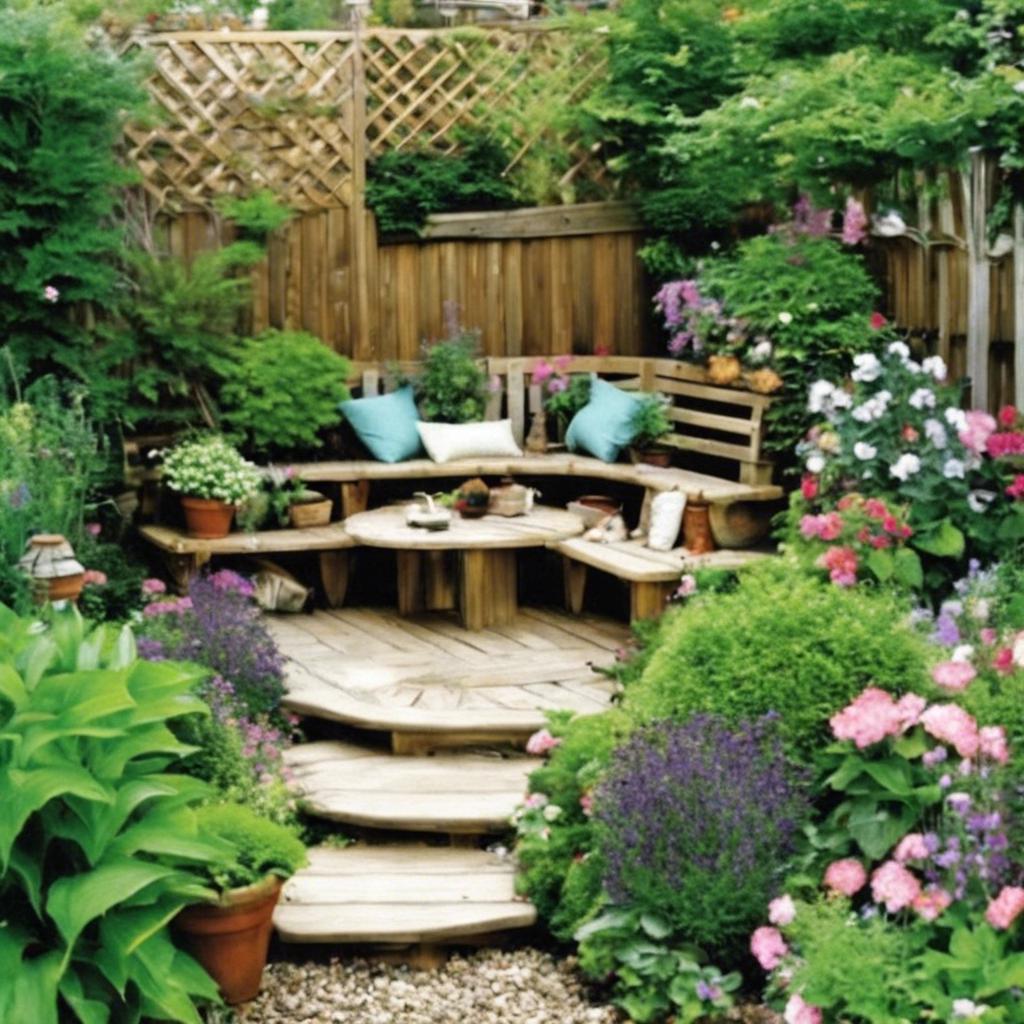
In a small garden landscape, every detail counts. One of the most powerful tools in a designer’s arsenal is the use of color. By strategically selecting plant color schemes, you can create a vibrant and visually stunning outdoor space that feels larger than life. Whether you prefer a monochromatic scheme or a bold mix of hues, the power of color can transform even the tiniest of gardens into a breathtaking oasis.
Mix and Match: One of the easiest ways to create impact in a small garden is by mixing and matching plants with different colors. Try pairing complementary colors like purple and yellow for a bold and eye-catching look, or opt for a more subtle combination of pastel shades for a soft and serene atmosphere. By layering plants with varying colors and textures, you can create depth and interest in even the smallest of spaces.
Seasonal Rotation: Keep your small garden looking fresh and inviting year-round by rotating your plant color schemes with the changing seasons. In the spring, embrace pastel shades and vibrant greens to welcome the new growth. Summer calls for bright and bold hues that add energy and excitement to your space. As autumn approaches, consider warm tones like reds, oranges, and yellows to create a cozy and inviting atmosphere. And in the winter months, experiment with cool blues and whites to evoke a peaceful and tranquil setting.
| Color Scheme | Recommended Plants |
|---|---|
| Monochromatic | Rosemary, Lavender, Succulents |
| Bold Mix | Tulips, Geraniums, Sunflowers |
Remember, the power of color is not limited to just flowers. Consider incorporating colorful foliage, berries, and even painted garden decor to enhance your small garden’s color palette. With a little creativity and a keen eye for design, you can turn your tiny garden into a true masterpiece that will be the envy of all who see it.
Water Features in Small Spaces: Adding a Tranquil Oasis to your Small Garden Landscape
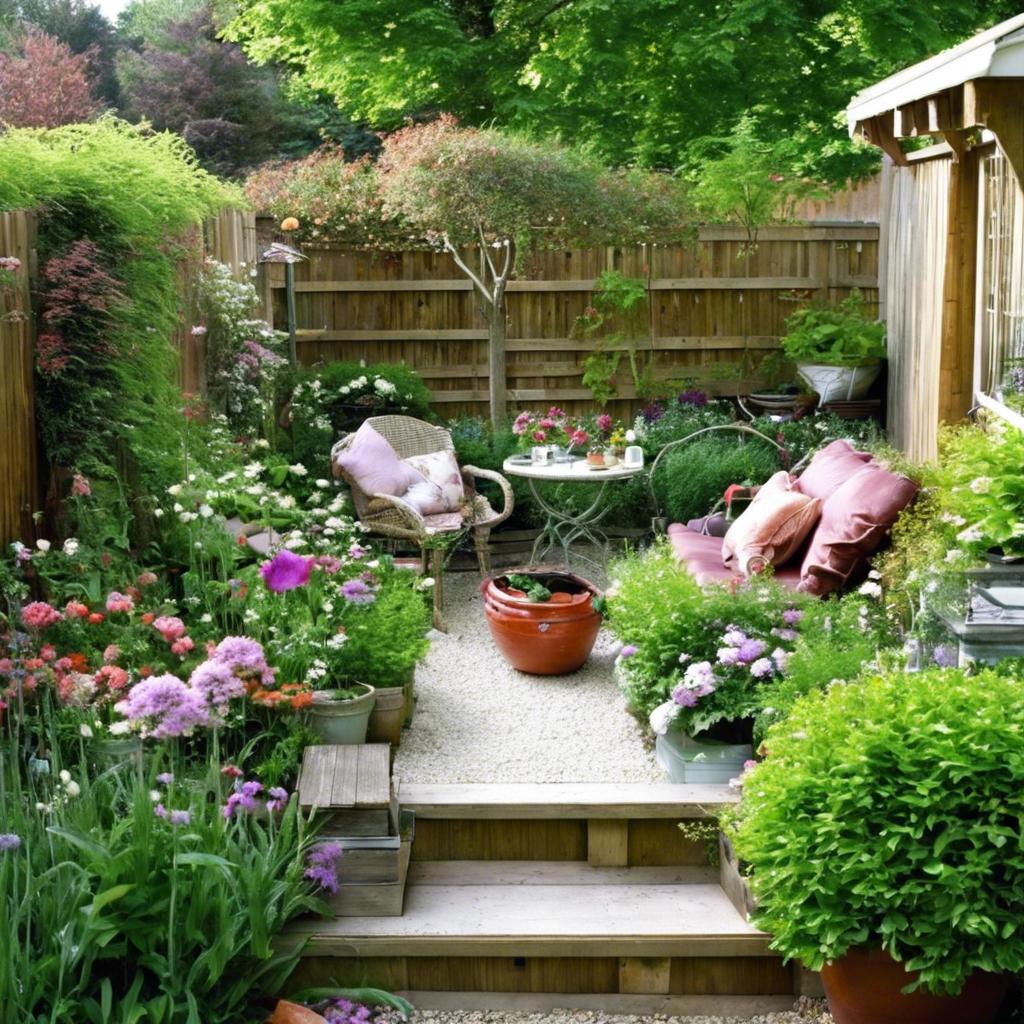
Looking to transform your small garden into a tranquil oasis? Water features are a fantastic way to add a touch of serenity and beauty to even the tiniest of spaces. With some creativity and planning, you can create a stunning water feature that will become the focal point of your garden landscape.
One idea for incorporating a water feature into a small garden is to create a mini pond. This can be as simple as a small container filled with water and aquatic plants, or as elaborate as a custom-built pond with a fountain or waterfall. The sound of running water can create a soothing atmosphere, and the addition of water lilies or other aquatic plants can bring color and life to your garden.
Another option for adding a water feature to a small space is to install a wall fountain. Wall fountains are perfect for small gardens as they take up minimal floor space but still provide the calming sound of running water. You can find wall fountains in a variety of styles and materials, so you’re sure to find one that complements your garden’s aesthetic.
Repurposing Materials: Sustainable Practices in Small Garden Landscaping
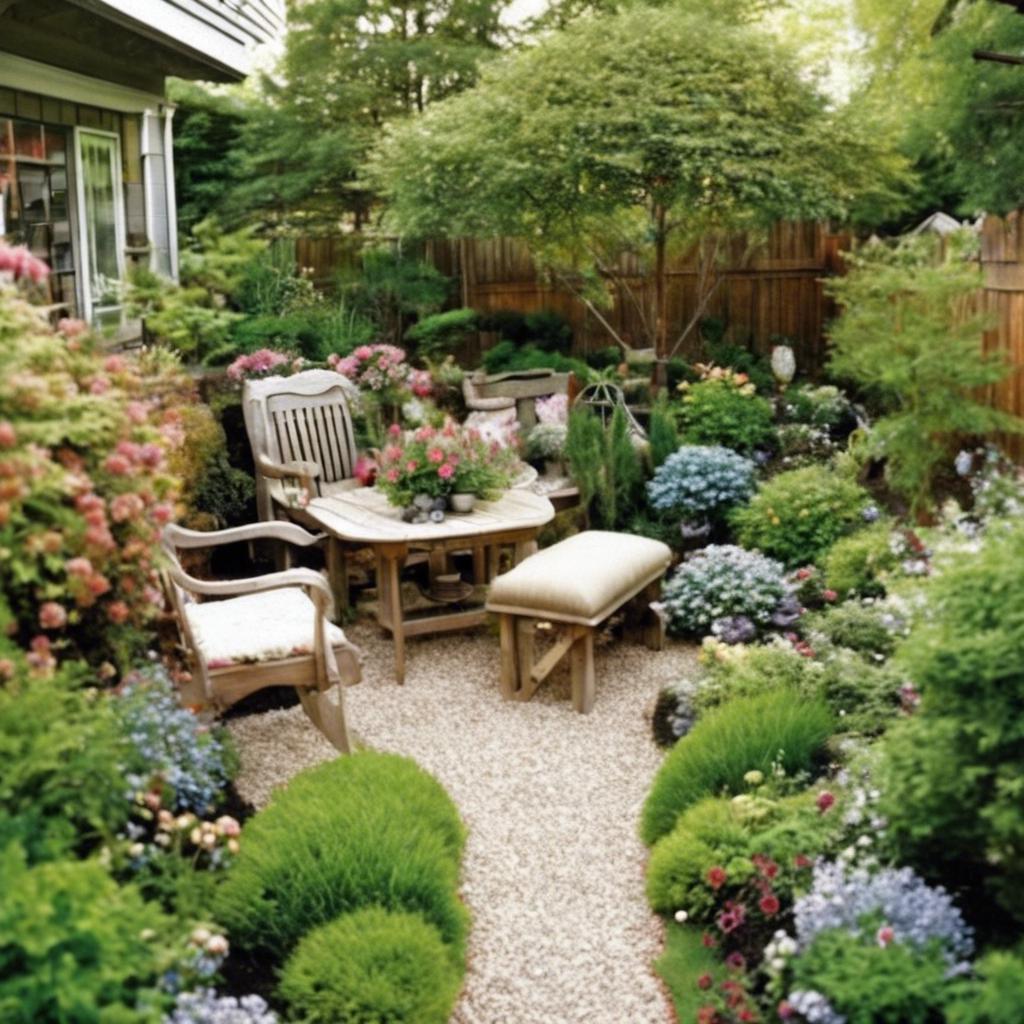
When it comes to small garden landscaping, thinking creatively and sustainably can lead to stunning results. Repurposing materials is not only eco-friendly but can also add unique character to your outdoor space.
One creative idea is to use old wooden pallets to create vertical planters. By simply stacking the pallets, adding some soil, and planting your favorite flowers or herbs, you can maximize space and create a beautiful focal point in your garden. Another option is to repurpose old mason jars or tin cans as delicate hanging lanterns or vases, adding a touch of whimsy to your garden.
Don’t overlook the potential of discarded items such as old tires or broken ceramics. These can be transformed into eye-catching planters or colorful mosaic pathways. Embracing the imperfections of these materials can give your small garden a unique and charming appeal. Remember, sustainability is not about perfection, but about creativity and care for the environment.
Embracing Native Plants: Harnessing the Beauty of Local Flora in Small Garden Landscapes
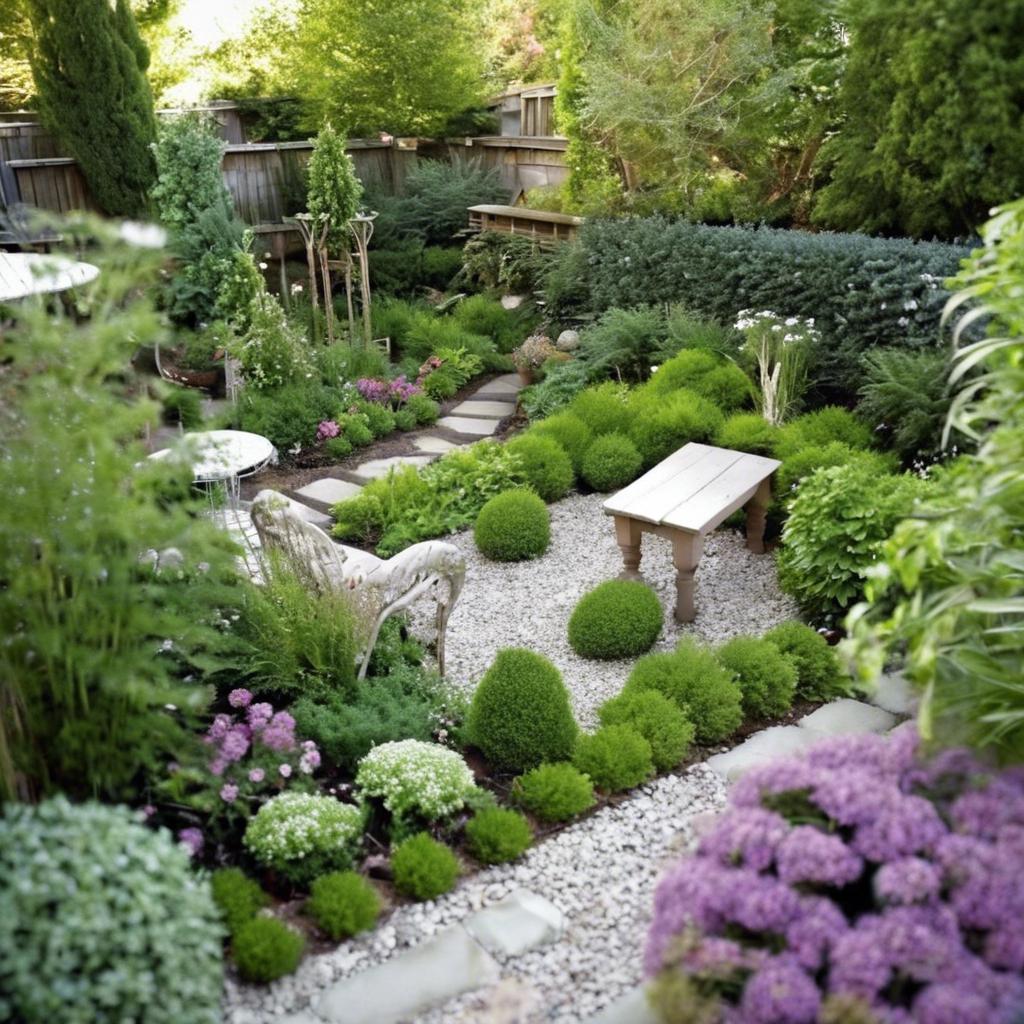
Small gardens can offer a unique opportunity to showcase the beauty of native plants in a creative and sustainable way. By harnessing the natural beauty of local flora, you can transform your tiny outdoor space into a vibrant oasis that attracts pollinators and wildlife. Embracing native plants not only enhances the visual appeal of your garden but also supports the ecosystem and reduces the need for excessive watering and maintenance.
One creative way to incorporate native plants in your small garden landscape is by creating a miniature wildflower meadow. Choose a sunny spot in your garden and scatter a mix of native wildflower seeds, such as black-eyed susans, coneflowers, and butterfly milkweed. As the flowers bloom and grow, they will attract bees, butterflies, and other beneficial insects, creating a dynamic and ever-changing display of color and life. To add a touch of whimsy, consider adding a small bench or a bird bath to create a tranquil retreat within your meadow.
Another idea for incorporating native plants in small garden landscapes is to create a vertical garden using a variety of native vines and climbers. By utilizing trellises, arbors, or even repurposed ladders, you can create a vertical tapestry of greenery that adds height and depth to your garden space. Consider planting native vines such as trumpet vines, clematis, or climbing hydrangea to add texture and visual interest to your vertical garden. This creative approach not only maximizes space but also adds a unique architectural element to your garden.
Focal Points and Pathways: Design Principles for Small Garden Landscapes
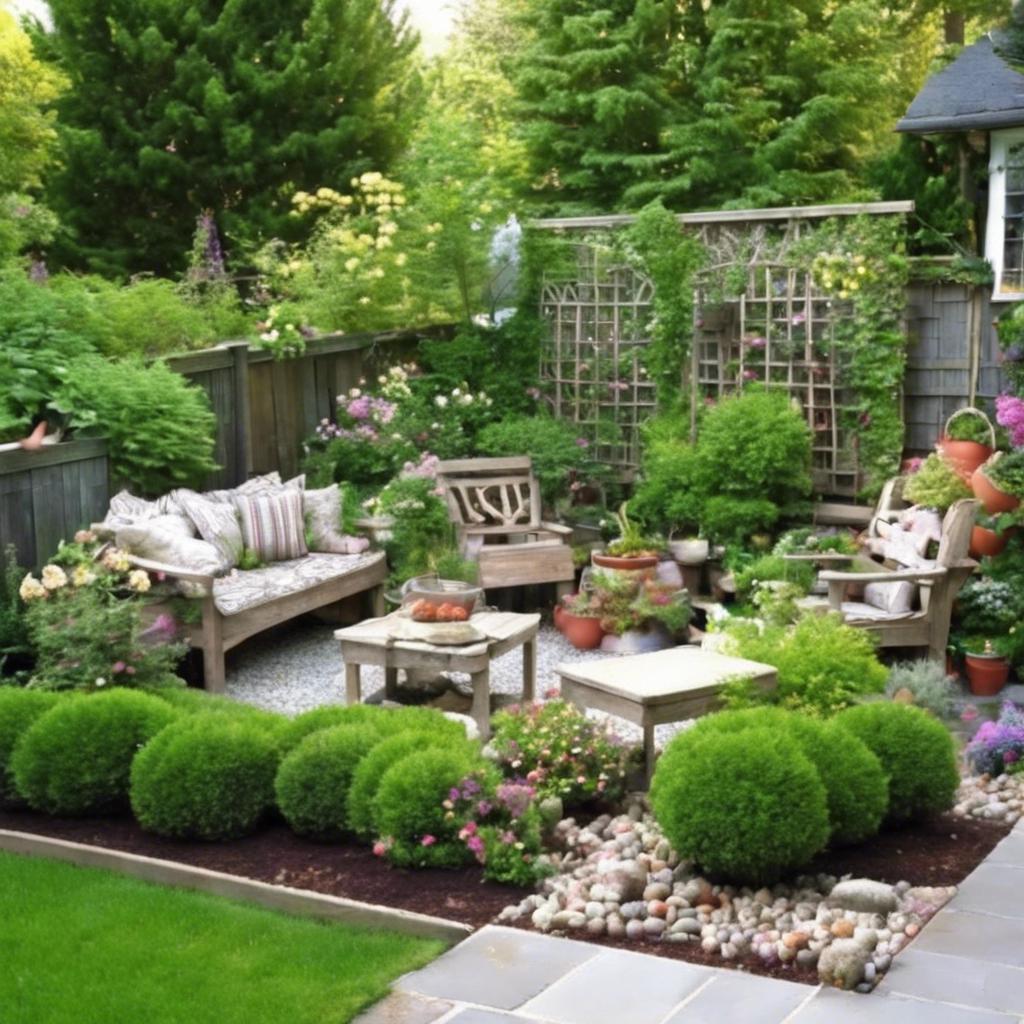
In small garden landscapes, creating focal points and pathways are crucial design principles to make the most of limited space. To add visual interest and functionality to your small garden, consider incorporating unique elements such as a stunning water feature, a colorful sculpture, or a cozy seating area. These focal points will draw the eye and create a sense of flow throughout the space.
When designing pathways in a small garden, think about how they can connect different areas of the landscape while also adding aesthetic appeal. Curving pathways can create a sense of discovery and intrigue, leading visitors on a journey through the garden. Using materials like gravel, stepping stones, or even colorful tiles can add texture and visual interest to the pathways, making them an integral part of the overall design.
To make the most of a small garden landscape, consider planting a variety of plants in different heights, colors, and textures. This will create depth and dimension in the space, making it feel larger and more dynamic. Utilize creative planting techniques such as vertical gardening, hanging baskets, and container gardens to maximize space and add visual interest. Remember, in a small garden, every plant is a treasure waiting to be discovered.
Illuminating the Night: Lighting Ideas to Enhance your Small Garden Landscape
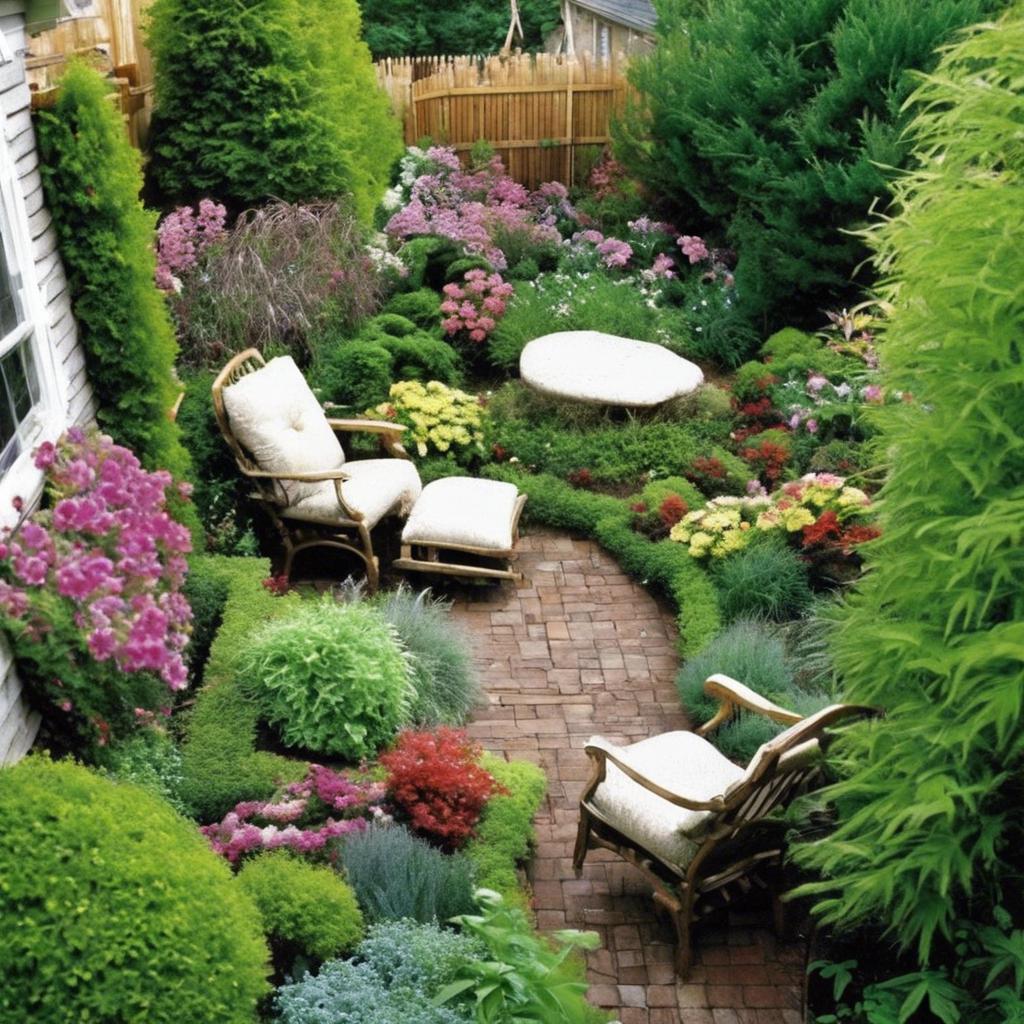
When it comes to transforming a small garden into a magical oasis, lighting plays a crucial role in creating ambiance and enhancing the overall landscape. By strategically placing lights throughout your garden, you can illuminate key features and create a mesmerizing nighttime atmosphere. Whether you prefer soft, warm lighting for a cozy feel or bright, colorful lights for a more vibrant look, there are countless creative ways to illuminate your small garden landscape.
One idea for lighting up your small garden is to use solar-powered lights. These energy-efficient lights are not only eco-friendly, but they also come in a variety of styles and designs, making it easy to find the perfect match for your garden’s aesthetic. Solar-powered lights can be placed along pathways, around plants, or even in trees to create a whimsical glow throughout your garden. Plus, since they don’t require any wiring, they are easy to install and move around as needed.
Another creative lighting idea for small gardens is to incorporate LED strip lights. These versatile lights can be applied to almost any surface, allowing you to highlight specific areas of your garden with a modern touch. Whether you want to outline the edges of a deck or patio, create a soft glow around a water feature, or accentuate the architecture of your home, LED strip lights are a customizable and efficient option for adding illumination to your outdoor space.
Q&A
Q: What are some creative small garden landscaping ideas for maximizing space?
A: Some ideas include vertical gardening with trellises or hanging plants, using multifunctional furniture for seating and storage, and creating a mini herb or vegetable garden in raised beds or containers.
Q: How can I add visual interest to a small garden?
A: You can add visual interest by incorporating different textures and colors with a variety of plants, using decorative elements like colorful containers or garden art, and creating focal points with eye-catching features like a small water feature or sculpture.
Q: What are some clever ways to create privacy in a small garden?
A: Privacy can be achieved by using strategically placed tall plants or trees, installing a trellis or pergola with climbing vines, or adding a living screen with bamboo or ornamental grasses.
Q: How can I make my small garden feel larger?
A: To create a sense of space in a small garden, consider using mirrors to reflect light and create the illusion of depth, incorporating diagonal lines or pathways to draw the eye, and using light-colored paving or gravel to brighten up the space.
Q: What are some low-maintenance landscaping ideas for a small garden?
A: Low-maintenance options include planting native plants that are suited to your climate, using drought-tolerant succulents or ornamental grasses, and creating a rock garden or gravel pathway that requires minimal upkeep.

